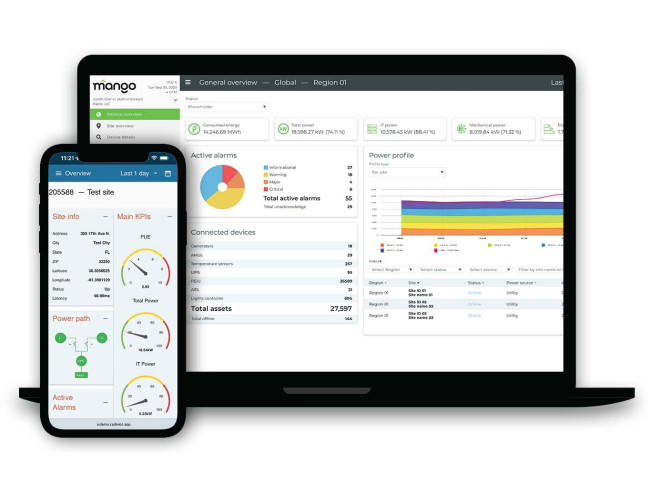Resources > Blog Post > Scaling Your Operations: The Two-Dimensional Challenge
Scaling Your Operations: The Two-Dimensional Challenge

Behind many growing and evolving operations lurks an invisible threat: the scalability ceiling. What happens when your infrastructure suddenly multiplies tenfold or your geographic footprint triples overnight? Will your IoT data collection and monitoring systems bend or break?
Companies across industries—from data centers managing thousands of critical systems to telecom providers with geographically dispersed networks, from energy utilities balancing complex grids to facility managers juggling multiple properties—often discover that their initial IoT success stories become cautionary tales when growth and advancement enter the equation.
As IoT technologies become more embedded in infrastructure operations, the ability to address scalability challenges before they impact your operations could save your organization countless hours of downtime and millions in unexpected remediation costs.
Understanding the Dual Nature of Scalability
When we talk about scalability in IoT, we're actually addressing two distinct dimensions: vertical scalability (the number of devices and data points at a single location) and horizontal scalability (the ability to replicate success across multiple locations).
In the data center industry, a single facility might need to monitor thousands of environmental sensors, power meters, and security devices—a primarily vertical scaling challenge. Meanwhile, telecom companies face a more complex scenario: not only do they need to manage networks across hundreds or thousands of geographically dispersed sites (horizontal scaling), but modern telecom facilities also house increasingly dense equipment configurations with diverse technologies (vertical scaling).

Similarly, energy utilities and facility management companies typically grapple with both dimensions simultaneously, requiring solutions that can scale in multiple directions.
Put simply: True IoT scalability means growing both up (more devices) and out (more locations) without sacrificing performance, security, or visibility.
The Vertical Scaling Challenge: More Devices, More Complexity
When scaling vertically, organizations typically encounter several obstacles:
Protocol Proliferation: As you add more systems and devices, you inevitably encounter a variety of communication protocols. Legacy systems and newer IoT sensors often speak entirely different languages.
Data Volume Management: The exponential growth in data points can overwhelm both network infrastructure and storage systems. Many solutions that perform admirably with hundreds of devices begin to falter when handling thousands.
While numerous IoT platforms can handle vertical scaling reasonably well, many do so by forcing standardization on communication protocols or data structures. This approach works until you need to integrate that legacy system using a proprietary protocol.
Radix IoT takes a different approach by embracing diversity rather than forcing standardization. The platform's architecture accommodates virtually any protocol or device type—allowing organizations to scale vertically without replacing functional equipment.
The Horizontal Scaling Challenge: More Locations, More Headaches
Horizontal scaling—extending your IoT solution across multiple locations—presents an entirely different set of challenges:
Connectivity Constraints: Reliable connectivity to remote locations often comes with prohibitive costs. Even the best cellular connections typically offer only about 98% reliability—leaving you with approximately 175 hours of potential blindness per year, during which critical failures could go undetected, equipment could be offline, or security breaches could occur without any central visibility.
Edge Processing Requirements: When connectivity isn't guaranteed, edge computing becomes essential. Without a coherent edge strategy, organizations face a proliferation of different hardware configurations and security vulnerabilities that grow exponentially with each new site, resulting in delayed updates and unpatched security flaws.
Consistency vs. Customization: Each location often has unique requirements, yet maintaining operational efficiency demands some level of standardization. This balancing act frequently leads to either overly rigid systems that can't accommodate local needs or completely customized deployments that become unmanageable at scale, causing engineering hours to multiply and total cost of ownership to skyrocket.
This dimension of scalability is where many IoT platforms fall short. Solutions that perform brilliantly in campus environments often struggle when deployed across widely distributed, occasionally connected locations.
Radix IoT's distributed architecture directly addresses these challenges. The platform's edge capabilities ensure that each location continues to function independently during connectivity interruptions, while its synchronization mechanisms efficiently manage data transfer when connections are restored.

The Data Harmonization Challenge
Beyond the physical aspects of scaling, perhaps the most overlooked challenge is maintaining data integrity as both dimensions of scale increase. As you add more diverse devices across more locations, data structures naturally proliferate. Without a systematic approach to data harmonization, organizations quickly find themselves with information silos that prevent cross-system analysis.
This is precisely why Radix IoT has invested heavily in its data modeling capabilities. The platform automatically maps disparate data structures into consistent formats, enabling meaningful comparison across any combination of devices and locations.
Why Build-Your-Own Solutions Break at Scale
Many organizations initially consider building their own IoT infrastructure, particularly when starting with modest deployments. As we explored in our recent blog, this approach can seem cost-effective in the short term. However, scalability is typically where homegrown solutions falter.
What works for monitoring a few hundred data points at one location rarely works for thousands of points across dozens of sites. The engineering resources required to solve both vertical and horizontal scaling challenges simultaneously are substantial—and often underestimated.
Scalability Red Flags and Green Lights to Look for in Third-Party Solutions
How can you determine if your current or prospective IoT solution will scale effectively? Look for these warning signs:
Red Flags: Solutions that require custom coding for each new device type, have fixed database structures, rely solely on cloud processing without edge capabilities, have expensive licensing structures, or show noticeable performance degradation as you add devices.
Green Lights: Platforms with modular architectures, automatic device discovery, flexible data modeling, robust edge processing capabilities, and proven deployments at scales beyond your anticipated needs.
Ready to Scale Without Limits?
As you evaluate your growth strategy, consider how your current IoT approach will handle not just today's requirements, but tomorrow's inevitable growth—both vertically and horizontally.
Radix IoT was built from day one to address both dimensions of scalability. Our platform has successfully scaled to support hundreds of thousands of data points across thousands of distributed locations—without sacrificing performance, security, or usability.
Ready to Learn More?
Leveraged by telecom, energy, datacenters and facilities’ operations worldwide – the Radix IoT platform seamlessly unifies data across pre-existing assets and systems. As a result, our customers get the real-time data insights needed to more effectively manage their operations and better protect their bottom line. We invite you to learn more – request a demo today!